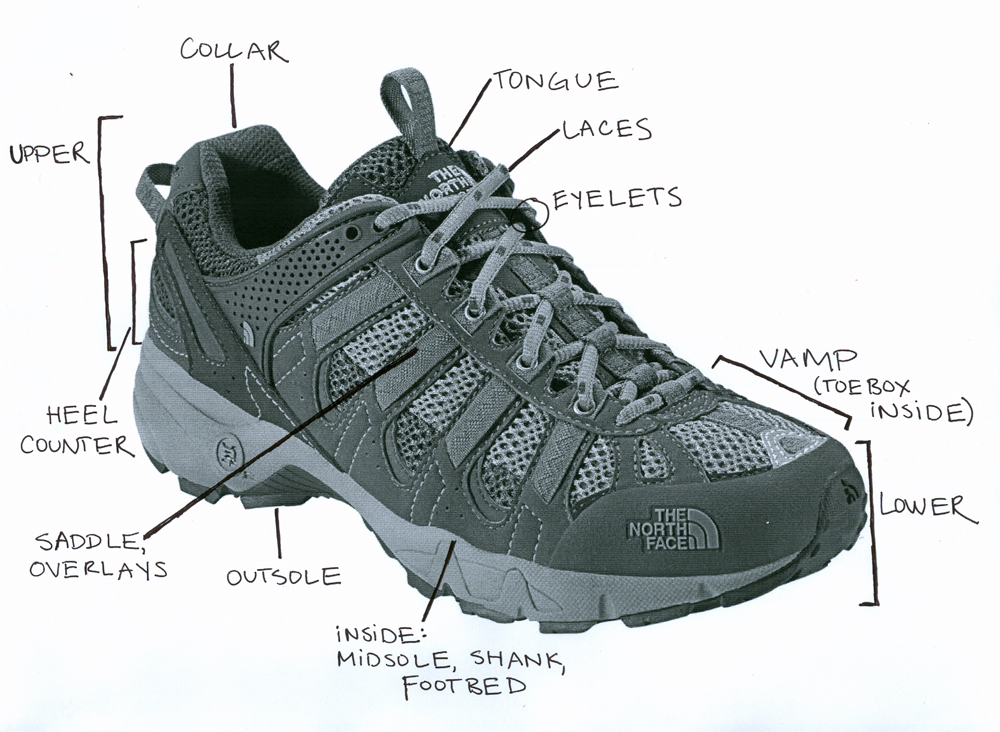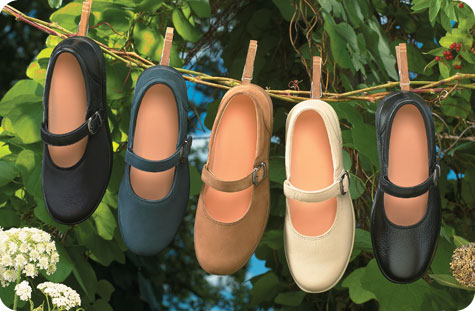Proper diabetic footwear is the most important aspect of your diabetic foot management. The concept of a diabetic shoe is a shoe designed to prevent foot complications. Not only should diabetics wear properly fitted shoes, they need to go out of their way to wear shoes that take pressure off of any prominent areas such as those associated with hammer toes and bunions etc. Poorly fitted shoes, along with numbness and foot deformities put diabetics at a much greater risk of diabetic foot complications. Basically anything that protects the feet, enhances function, encourages good blood circulation and ensures that pressure points are minimized, are the main characteristics of diabetic shoes.
Why do I need Diabetic Shoes?
Diabetic shoes are used to prevent complications caused by two most common conditions seen in diabetics- Neuropathy and peripheral arterial disease. Diabetic shoes will:
- Relieve areas of excessive pressure- by doing so, will prevent the formation of sores, corns, calluses, blisters and ulcers.
- Restrict movement of joints- by limiting movement of certain joints in the feet, they help reduce swelling, relieve pain and provide stability.
- Support deformities- this will help relieve pain, prevent abrasions caused by skin rubbing against shoes and avoid further deterioration.
- Absorb/disperse shock
- Stabilize and protect the foot
What to look for in Diabetic Shoes?
Before purchasing diabetic shoes, it is important for you to consult with your healthcare provider/podiatrist about the type of shoes that are best for your feet. However, all diabetic shoes have these basic characteristics:
- It is recommended that you get your feet professionally measured. This is accomplished with a foot measuring device either by your podiatrist or orthotist and is also available at many shoe stores that carry diabetic shoes. The device will measure length from heel to toe (overall length), from heel to ball of the foot, arch length and width of the foot.
- Normally, one foot is slightly larger than the other. Make sure you base your shoe size on the larger foot to get the proper fit.
- Feet should be measured in the afternoon when they are largest due to normal swelling that occurs at the end of the day.
- Try on shoes while wearing socks that you normally use. This ensures proper fit.
- There should be adequate room around the toe area for you to wiggle your toes without rubbing them on the upper. Also, the distance between your longest toe and shoe tip should be about quarter to half inch. This ensures that shoes remain comfortable while walking.
- Make sure the heel fits snugly.
- Walk around for as long as you need to make sure the shoe is comfortable and properly fitting. The right shoes should be immediately comfortable throughout the gait cycle.
- Ask your podiatrist where to buy diabetic shoes. Most podiatric practices these days are also involved with a diabetic shoe program. If your podiatrist is not carrying them, they will direct you in the right direction.
- Extra-depth- So that there is extra room within the shoes to accommodate orthotics (diabetic insoles/foot inserts). Extra-depth also prevents top of the foot and toes from rubbing against top of the shoes.
- Extra-width- This accommodates any orthotics and prevents the sides of the shoe from rubbing against the sides of the foot.
- Diabetic shoes have a higher and wider toe box.
- Higher, so that there is enough room to move/wiggle your toes and to prevent rubbing against the upper.
- Wider, so that the ball of the foot is not pinched. However, it should not be so wide that the foot slips around side to side, making falling easier.
- Seam is the point where two pieces of materials are stitched together and it creates a tiny projection. This can be a source of constant irritation for diabetics due to loss of sensation in their feet and can result in abrasions and ulcerations. That’s why it’s very important to buy shoes with smooth inner lining and no prominent seams.
- Make sure to feel inside the shoes with your hand for prominent seams or any rigid structure that can cause irritation.
- Includes shoes laces and straps with hook and loop (Velcro).
- Lace-up shoes are generally the best because they can be loosened slightly to allow for swelling of the feet.
- Slip-on or loafers are not recommended for diabetics.
- Good quality leather is an excellent choice.
- Breathable upper helps with air circulation, allowing sweat to evaporate and preventing shoes from becoming damp. This keeps feet dry throughout the day.
- Soft and stretchable material will mold to the shape of the foot and also give some room for swelling.
- The tongue of a diabetic shoe should be wide and padded.
- Padded tongue of the shoe prevents foot from sliding forward and helps securing heel in the back. This secures the foot and keeps it from slipping up and down.
- Wide and padded tongue also prevents laces from digging into top of your foot.
- A cushioned insole that conforms to the foot provides support for foot arches and relieves areas of excessive pressure, thus preventing sores and blisters.
- Absorbs and disperses shock.
- Removable insole allows you to replace it with a custom made insert, which provides a better fit. The custom made insert should have three layers, an inner soft layer of foam and two outer layers made of stiff material to provide resilience.
- Foot inserts in diabetics are usually made of a material called Plastazote foam. Plastazote helps protect pressure points on your foot by conforming to heat and pressure. This is a highly recommended material for diabetic foot inserts.
- Insole should be replaced every 2-3 months.
- It should be resilient, flexible, repairable, non-skid and capable of shock absorption.
- It should be able to protect your feet from hard and sharp objects.
- Usually made out of carbon rubber.
- Mid sole of diabetic shoes should be well cushioned and strong enough to be able to support foot arches and absorb shock.
- To check for a strong mid sole, hold the shoe at the heel and push the front of the shoe up and towards the back.
- A shoe with a weaker mid sole will bend at the arch.
- This type of sole is helpful for diabetics who have limited joint mobility.
- How to check for rocker sole- Place the shoe on a flat surface and press on the heel. This will raise the toe end and vice versa.
- If you have joint mobility problems, ask your healthcare provider/podiatrist about rocker bottom shoes.
- It should be firm and rigid to provide medial and lateral ankle stability, which keeps the person from rolling an ankle.
- It should be adequately padded to prevent the hard material rubbing against the foot.
- It should be padded around the ankle. This prevents friction and makes it easier to slip in and out of the shoe.
- Heel collar should be low enough so that it doesn’t rub against the ankle.
What NOT to buy?
As a diabetic, you should avoid wearing these styles:
- High heels(less than 2.5cm is ideal) – High heels exert pressure on the ball of the foot and make the joints unstable.
- Sandals
- Flip-flops
- Pointed toes
- Plastic shoes
- Slip-on loafers
When to buy new shoes?
It usually depends on how often you wear them. Generally speaking, everyday shoes worn regularly need to be replaced at least once a year. Further, replace your shoes if bottom of the shoe is worn down, heel has collapsed or the inner lining is torn.
Continuing Proper Diabetic Foot Care:
Wearing shoes with above mentioned specifications is the easiest and most effective way to ensure that your feet stay healthy and protected. Always continue to practice proper diabetic foot care, visit your podiatrist regularly, manage your diabetes with your healthcare team and perform daily foot exams. Adhere to the proper foot care routine on a constant and regular basis. You can never pamper your feet too much, as they are the only pair you have!
In conclusion, as a diabetic it is very important for you to learn as much as possible about routine diabetic foot care as it plays the biggest role in preventing foot ulcers.
Diabetes and Foot Care … read more:
- Diabetes and Alcohol Consumption – Latest Release









This web site is really a walk-through for all of the info you wanted about this and didnt know who to ask. Glimpse here, and youll definitely discover it.